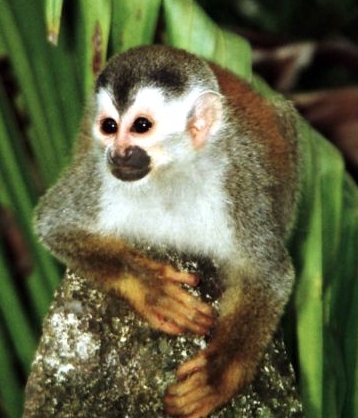Facts About Central American squirrel monkey
The Central American squirrel monkey, also known as the red-backed squirrel monkey, is a captivating primate native to the Pacific coast of Costa Rica and Panama. This species is distinguished by its vibrant orange and black fur, making it a remarkable member of the animal kingdom. They live in dynamic groups ranging from 20 to 75 members, illustrating their highly social nature.
These monkeys have an omnivorous diet, consuming a variety of fruits, insects, and small animals. However, they are subject to significant threats such as deforestation, hunting, and the pet trade, leading to a decline in their population.
Taxonomically, the Central American squirrel monkey belongs to the family Cebidae and is one of five recognized species of squirrel monkeys. There are two subspecies, each inhabiting different regions. They are closely related to the Guianan squirrel monkey and the bare-eared squirrel monkey.
In terms of appearance, these monkeys feature an orange back, a white underbelly, and a distinctive black cap on their heads. Males and females look quite similar, although males tend to be slightly larger. Their lifespan typically exceeds 15 years.
Behaviorally, these monkeys are arboreal, spending most of their time in trees and are diurnal, being active during the day. They live in egalitarian groups without a strict hierarchy. They primarily forage in the lower and middle forest strata and communicate through an array of vocalizations. They have specific behaviors to alert each other to predators.
Reproductively, their breeding season begins in September. Females enter estrus simultaneously, while males undergo physical changes in preparation. Following a six-month gestation period, females usually give birth to a single infant. Sadly, many infants fall victim to predation.
These monkeys are found in specific habitats along the Pacific coast of Costa Rica and Panama, predominantly within national parks. The International Union for Conservation of Nature (IUCN) classifies them as "vulnerable" due to habitat loss and fragmentation.
Fortunately, conservation efforts, including reforestation projects and various initiatives, are in progress to protect these playful primates. These efforts have even improved their status from "endangered" to "vulnerable" providing hope that, with continued support, their future could be brighter.

 Nicaragua
Nicaragua